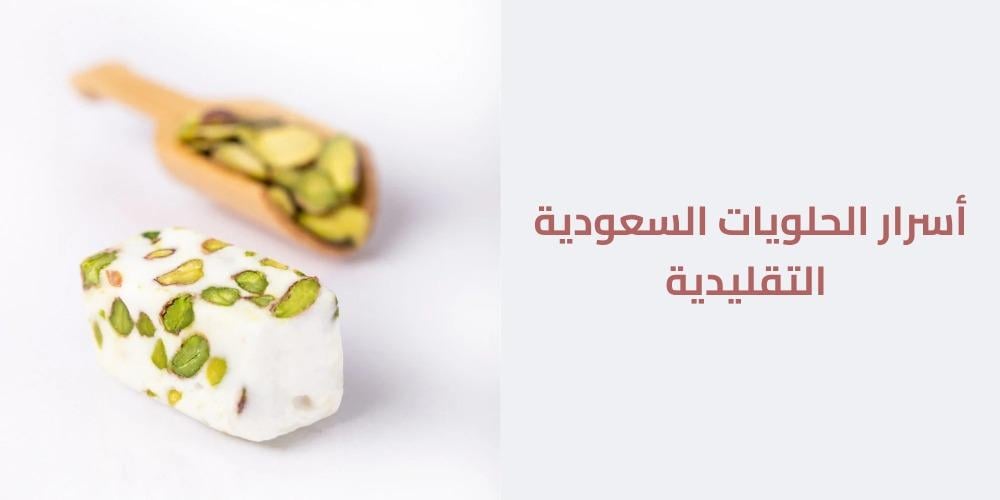The secrets of traditional Saudi sweets are an integral part of the culture and hospitality in the Kingdom. If you are looking for the secrets of Saudi sweets, there are many arts and ingredients that make these sweets unforgettable experiences. Learn the details from Al-Ansar Dates and Sweets
The secrets of Saudi sweets vary between rich flavors and special techniques that distinguish them from others. In this article, we will discuss the secrets of traditional Saudi sweets that have made them a symbol of hospitality and heritage. We will learn about the methods of preparing them and their cultural importance.
Secrets of Saudi sweets on holidays
Eid sweets in the Kingdom are considered one of the most prominent types of Saudi sweets that highlight the secrets of traditional sweets . On Eid al-Fitr and Eid al-Adha, many sweets are spread, such as maamoul, kunafa, and baklava, which are characterized by diversity and richness in taste, as each type of these sweets carries within it a long history of preparation and innovation across generations. These sweet secrets contain special ingredients such as dates and nuts that give them a distinctive taste.
- Dates are the main ingredient in many of these sweets, as they are used to prepare maamoul, which consists of dough stuffed with dates or nuts.
- Baklava is characterized by thin dough sheets stuffed with nuts such as pistachios or walnuts and sweetened with thick honey.
These sweets are an essential part of the Saudi celebratory culture, prepared with meticulous detail that reveals the secrets of the sweets that everyone loves.
Secrets of Saudi Ramadan Sweets
The month of Ramadan in Saudi Arabia is the season of sweets par excellence. Every Saudi home has traditional Ramadan sweets such as qatayef, basbousa, and samosa. These sweets vary according to the region and its traditions, but there are common sweet secrets that distinguish them all, such as the extensive use of butter and sugar, which gives these sweets a delicious and distinctive taste.
- Qatayef is one of the most famous desserts in Ramadan. It is stuffed with nuts or cheese and fried or baked, then covered with sugar syrup. The method of preparing it varies from one region to another, but its wonderful taste and crunchy texture remain constant. This dessert is considered one of the secrets of desserts that combine sweet and salty taste at the same time.
- On the other hand, Basbousa is a distinctive fatty dessert made from semolina and sugar. It is characterized by its sweet and filling taste. Coconut or yogurt is sometimes added to it to give it a distinctive flavor and give it a crunchy and delicious texture. Basbousa is considered one of the desserts that the Ramadan table is not complete without. It carries within it the secrets of sweets that add a special touch to the Ramadan table and the demand for it increases during the holy month.
- Another popular Saudi Ramadan dessert is Kunafa, which is very popular in many regions and is considered part of the Ramadan table traditions. It is prepared with layers of thin dough or toasted bread and stuffed with walnuts or nuts, then sweetened with sugar syrup.
The methods of preparing Kunafa vary according to local traditions, but they all reflect the secrets of sweets that characterize Saudi cuisine during Ramadan.
Secrets of Saudi popular sweets
Among the most famous popular sweets in Saudi Arabia are Muhallabia, Halawa Tahiniya, and Luqaimat. Each of these sweets has its own sweet secrets that make them an integral part of the popular heritage. These sweets are distinguished by their unique taste that reflects the spirit of Saudi culture.
- Luqaimat is a famous Saudi dessert that is basically made from flour, water and sugar, then fried and covered with sugar syrup. It is a famous dessert that is eaten on various Saudi occasions and retains its unique taste that connects generations.
- Muhallebi is a traditional, soothing and easy-to-prepare dessert made of milk and sugar, served cold with nuts or dried fruits. Muhallebi is very popular throughout the Kingdom, and is a dessert that is prepared for special occasions and family gatherings. Special ingredients such as rose water or saffron are added to the milk to give the muhallebi a distinctive flavour.
- Halawa Tahiniya is a famous Saudi dessert that is characterised by containing tahini, sugar and nuts. It is served as a rich, fatty dessert and is considered a dessert that can be eaten as a light meal or with tea. It is a good source of energy.
These sweets tell a lot about the secrets of the sweets that distinguish the Kingdom.
Secrets of stuffed sweets in Saudi cuisine
Many traditional Saudi desserts rely on filling as a main ingredient. Stuffed desserts such as Maamoul and Stuffed Muhallebi represent a large part of the secrets of Saudi desserts. Maamoul is a famous dessert that is stuffed with dates or nuts and ingredients such as butter, flour and semolina are used in its preparation. Maamoul is distinguished by its unique flavor that reflects the local natural ingredients in Saudi Arabia.
Stuffed Muhallabia is a rich dessert that combines milk, sugar and local flavours such as rose water or orange blossom water and is prepared with layers filled with dried fruits or nuts.
The secrets of stuffed desserts depend on carefully choosing the ingredients to achieve a balance between taste and appearance.
The role of Saudi sweets in social occasions
Sweets play a major role in Saudi social events, being served as part of hospitality at family visits and occasions.
The secrets of Saudi sweets are not only in the way they are prepared, but also in the way they are presented. In addition to the wonderful taste, sweets are considered part of the culture that reflects hospitality and generosity.
Stuffed dates and maamoul are among the most prominent sweets served on private visits, and are considered among the secrets of sweets that distinguish Saudi hospitality.
Baklava and Kunafa are also considered desserts that are prepared for major occasions such as weddings and festivals.
Frequently Asked Questions
What are the most famous Saudi sweets in Ramadan?
Saudi Arabia is characterized by a wide range of traditional sweets that are part of its cultural heritage. The most famous of these sweets are Qatayef, which is stuffed with dates or nuts and fried or baked, and Maamoul, which is stuffed with dates or nuts and is prepared on special occasions. There is also Basbousa, which is a famous sweet throughout the Kingdom, and Kunafa, which varies in preparation between regions, in addition to Luqaimat, which is crunchy and covered with honey or syrup. These sweets reflect the cultural diversity in Saudi Arabia, and are an essential part of occasions and celebrations.
2. Can Saudi sweets be prepared at home?
Yes, many traditional Saudi sweets can be prepared at home using simple ingredients available in local markets.
For example, maamoul and qatayef can be easily prepared using flour, semolina, dates or nuts, while some other desserts such as baklava and kunafa may require special skill in handling the thin dough, but practicing these recipes helps in mastering them. Preparing desserts at home is not only fun, but also gives you the opportunity to use natural and healthy ingredients and enhances the cultural experience by preparing traditional dishes.
3. Are there any healthy alternatives to Saudi sweets?
Yes, there are many healthy alternatives that can be used to prepare traditional Saudi sweets in a healthy way.
For example, white sugar can be replaced with natural honey or coconut sugar, which has a higher nutritional value. Almond flour or oats can also be used instead of white flour. Healthy alternatives are not limited to ingredients only. Coconut oil or olive oil can be used instead of butter or ghee, which reduces saturated fats and increases the health benefits of traditional sweets.
4. What is the importance of Saudi sweets in Saudi culture?
Saudi sweets play a major role in the cultural and social heritage of the Kingdom. They are not just sweet foods, but a symbol of Saudi hospitality and generosity.
On major occasions such as holidays and family visits, sweets are served as part of traditions that promote social cohesion. Preparing and serving sweets also reflects traditional culinary skills passed down through generations, enhancing Saudi cultural identity and making sweets an integral part of celebrations and occasions.

